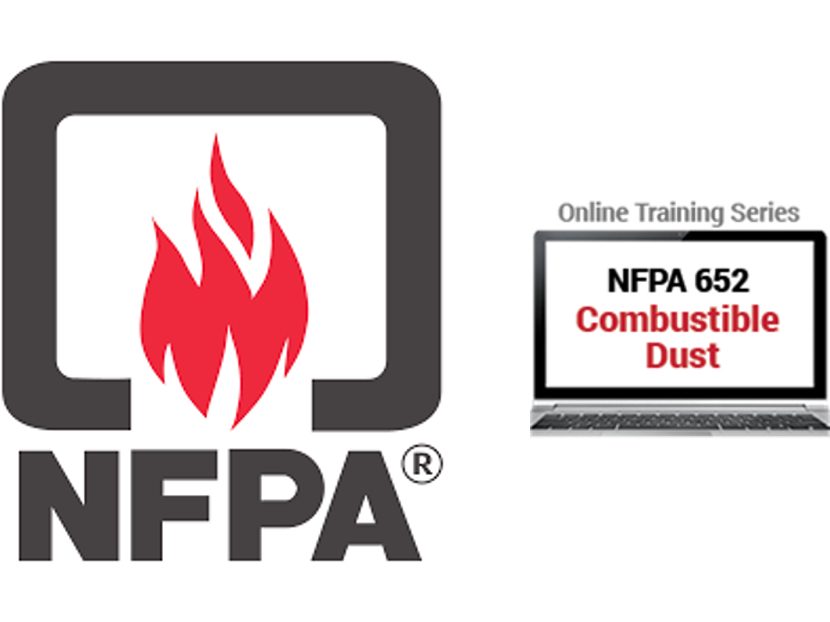NFPA Debuts Three-Part NFPA 652 Combustible Dust Online Training Series

The National Fire Protection Association (NFPA) has released a new online training program centered around combustible dust, an industrial workplace hazard that, if left unaddressed, can lead to fire, flash fires, and explosion. The new learning solution is based on the latest edition of NFPA 652, Standard on the Fundamentals of Combustible Dust (2019), which mandates the completion of a dust hazard analysis (DHA) for existing processes and facility compartments where combustible dust may be present. The standard also requires the DHA to be reviewed and updated every five years.
The three-part NFPA 652 Combustible Dust (2019) Online Training Series was developed to help those responsible for manufacturing operations in the mining, power generation, wood products, automotive, metalworking, agriculture, food production, and other sectors understand different forms of dust, proactive preventative measures to be taken to reduce risk, and the impact that compliance has on protecting people and property.
The new offering includes the following three distinct one-hour courses that can be taken individually or as a complete training trio:
- Combustible Dust Safety Awareness: Course #1 offers an overview of personal, peer, and facility safety, as well as situational awareness. It is perfect for new engineers, designers, plant process workers and operators, distributors, investigators, facilities managers, insurers, and code enforcers.
- Combustible Dust Hazard Evaluation: Course #2 provides an understanding of the DHA, the qualifications that are necessary for those performing a DHA, and ways to remove barriers in work environments that process or produce combustible dust. This course is ideally suited for engineers, designers, health and safety leaders, loss control/facility risk/safety specialists, facilities managers, insurers, inspectors, and code enforcers.
- Combustible Dust Controls and Safeguards: Course #3 offers insights on combustible dust handling, the processing systems involved, and implementing safety controls. The same professionals interested in Course #2 will find value in this session.
During the development of the immersive educational program, NFPA tapped into an expert training advisory group to glean specialized industrial knowledge and input. The modules are set in a grain mill and require learners to identify potential risks, perform a DHA, and implement the recommendations put forth in the DHA. Throughout the series, important code information, safety considerations, and best practices are reinforced via engaging videos, interactive simulations, informative case studies, and other educational enhancement features. Upon finishing the training, and scoring 70 percent or higher on final assessment exams, learners will earn .1 continuing education units (CEUs) for each learning hour.
Last month, Fire Protection Engineer Alex Ing, the staff liaison for NFPA 652, spoke about the standard on the Dust Safety Science podcast hosted by Dr. Chris Cloney. During the Keeping Hazardous Environments Safe conference on Oct. 5, Cloney will conduct a session on NFPA 652 that features real world case studies and unique scenarios involving combustible dust. The dedicated industrial/chemical educational program is part of the yearlong NFPA 125th Anniversary Conference Series.
The Fire Protection Research Foundation, the research affiliate of NFPA, also issued a report late last year on the Variables Impacting the Probability and Severity of Dust explosions in Dust Collectors. The research shows that dust collectors are where the majority of dust explosion incidents take place and emphasizes that by determining where an incident is most likely to occur or be more severe (both in terms of injury and financial loss), workers can then focus on specific high-risk areas.




